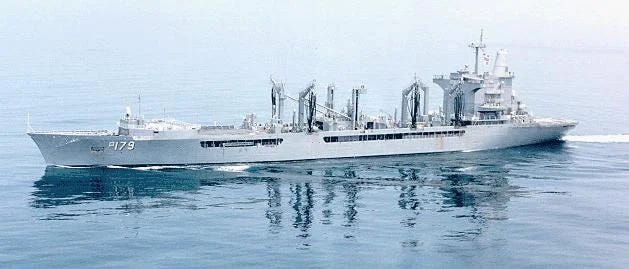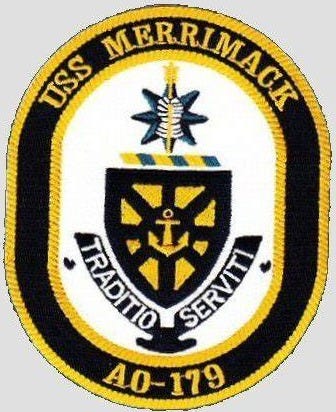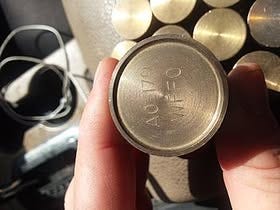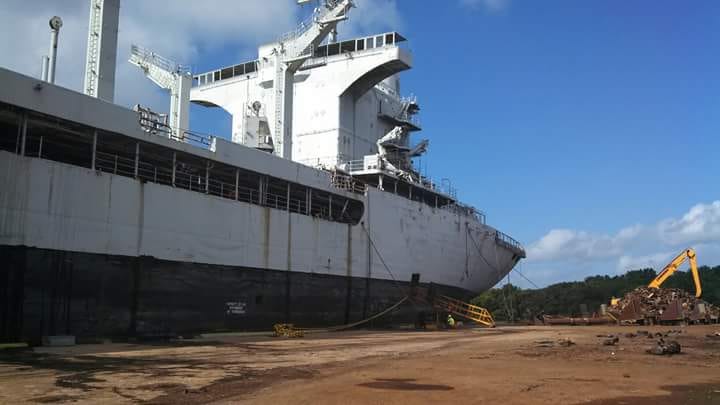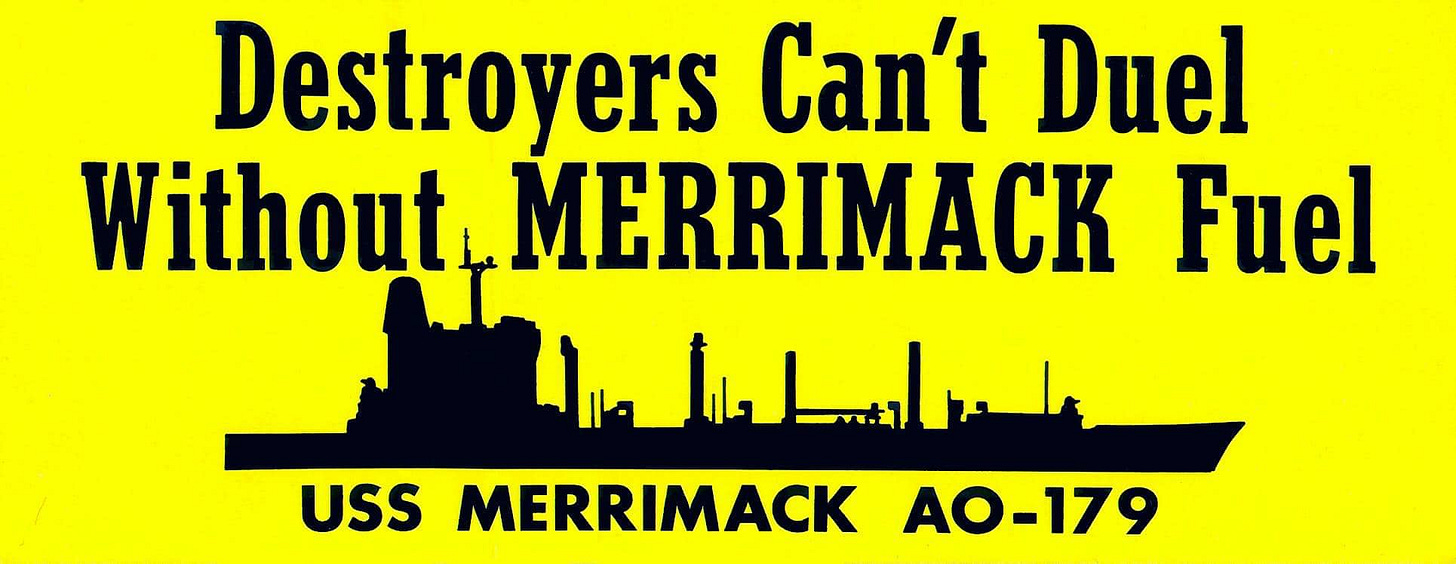Tribute to My First Ship: USS Merrimack (AO-179)
Known to her crew as “The World’s Finest Fleet Oiler”—and to me, the ship that shaped my earliest lessons in leadership and resilience.
This is a tribute to the USS Merrimack (AO-179), a Cimarron-class fleet oiler that served the U.S. Navy with distinction during the final decades of the Cold War and into the 1990s. More than just a support vessel, she was a lifeline to the fleet—delivering fuel, supplies, and stability wherever she was needed. She also happened to be my first ship.
Origins and Construction
USS Merrimack (AO-179) was laid down on October 1, 1978, at Avondale Shipyards in New Orleans, Louisiana. She was launched on August 16, 1980, and commissioned into active service on November 18, 1981. Part of the Cimarron-class oilers, Merrimack was designed for speed and capacity, intended to keep pace with carrier strike groups and support ships far from port.
In the late 1980s, as part of a program to extend the lives and capabilities of several Cimarron-class oilers, Merrimack underwent a major overhaul known as “jumboization.” Between 1989 and 1991, she was cut in half and fitted with a 108-foot new midsection. This “plug” provided expanded fuel tanks and additional storage, allowing her to support larger, more sustained operations far from port. It wasn’t just a technical upgrade; it fundamentally changed the ship’s capabilities and gave her a new lease on life as a fleet replenishment powerhouse.
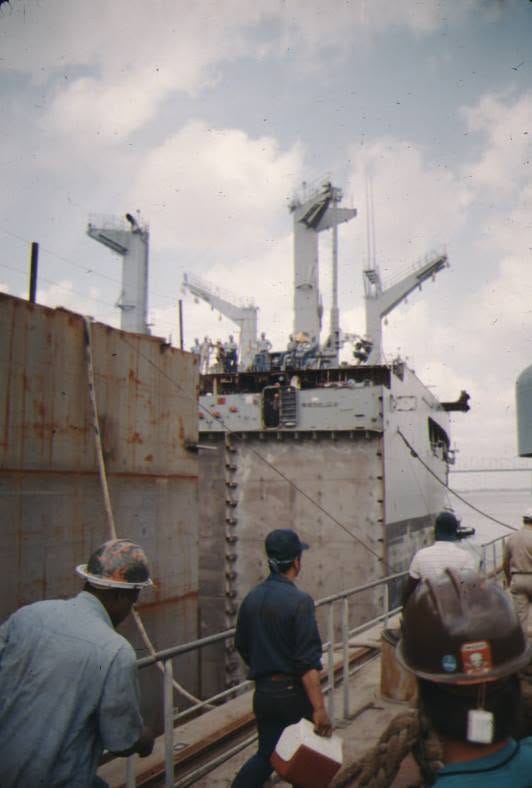
Fleet oilers like ours were traditionally named after rivers. The five ships in our class—Cimarron (the lead ship), Monongahela, Merrimack, Willamette, and Platte—all carried river names.
The original USS Merrimack (1855 Steam Frigate), my ship’s namesake, was stationed at Hampton Roads, Virginia, during the Civil War. After Union forces tried—and failed—to destroy her during the base’s capture, the Confederacy salvaged the hull, rebuilt her as an ironclad, and renamed her CSS Virginia. Her clash with the USS Monitor in 1862 at the Battle of Hampton Roads etched the USS Merrimack's name into naval legend.
Even though we were named after a body of water in New Hampshire and Massachusetts, the Civil War part of the Merrimack legacy wasn’t just a footnote for us—it was part of the ship. Our ship’s crest featured a metal gauntlet gripping a trident, symbolizing naval strength, and paid homage to the Merrimack’s fighting history and armor. In our ship’s enlisted mess (where people ate and congregated), a mural depicting the iconic “Clash of the Ironclads” further helped cement that legacy.
For me, the history mattered—it added depth and pride to the ship’s identity—but it was only part of the picture. This was my Merrimack—my first ship, where I began my naval career and learned fundamentals in leadership, engineering, ship handling, and navigation.
Her Capabilities
Though described as being “built for speed,” Merrimack wasn’t exactly fast. Her official top speed was 21.8 knots—roughly 25 mph. I don’t think I ever saw her go faster than 20 knots. Anything above that speed caused noticeable shuddering and vibration throughout the entire ship. Her power plant, producing 24,000 shaft horsepower, was arguably underpowered for her 38,000-ton displacement. Still, she had enough power to do the job—and more importantly, she was ours.
I reported aboard in July 1992, green and eager, and within just ten days, was underway for my first deployment. I had joined not long after her aforementioned jumboization was completed, and many sailors who’d endured that long overhaul were still aboard. They were a close-knit crew, bonded by shared hardship. As the new guy, I sometimes felt like an interloper—an outsider in someone else’s family.
Thankfully, the ship had a strong backbone—her Chief Petty Officers. These senior enlisted sailors took it upon themselves to train young officers like me. They taught me maintenance management, navigation principles, engineering control, and emergency procedures. I shadowed them on their watches, whether on the bridge or in the engineering spaces, learning all I could. They kept me out of trouble and showed me what authentic, unvarnished life at sea was like.
My direct supervisor, the Chief Engineer, was uncompromising, meticulous, and relentless. Her attention to detail was legendary—and necessary. In the brutal environment of a steam-powered warship, mistakes could kill. After eight months under her mentorship, I would’ve followed her to hell. She was one of the best leaders I’ve ever served under.
The Captains I served under aboard Merrimack also played a significant role in shaping me. I served under two during my time aboard, as ship commanders typically rotated every 18 to 24 months. Both monitored my progress, offered mentorship, and led by example. Earning their trust was no small task. When it came time for my final qualifications, they sat in on my oral boards—grilling me and ensuring I wouldn’t break their ship. Their signatures confirmed that I was fully competent and ready to take on new shipboard roles.
Over time, I earned my place among the crew. I qualified as an Engineering Officer of the Watch (EOOW), responsible for the steam plant and power systems. Later, I earned my Officer of the Deck (OOD) qualification and my gold Surface Warfare Officer device.
These hard-won qualifications marked my transition from green officer to a trusted team member who could manage the ship’s routine and evolutions both from the bridge and from engineering.
Mission and Deployments

Underway replenishment was the heart of the Merrimack’s mission. During my first Mediterranean and Red Sea deployment in 92-93, we performed 126 at-sea replenishments for ships from eight countries, refueling and provisioning aircraft carriers, cruisers, destroyers, frigates, amphibious ships, and other logistics vessels.
We pumped fuel at a rate of up to 3,000 gallons per minute per hose and could refuel two ships simultaneously, delivering a total of up to 18,000 gallons per minute per ship. At the same time, we transferred dry goods, parts, and ammo via highlines and even delivered sling loads by helicopter from our flight deck.
It was demanding, precision work for a crew of just about 200 sailors, but it was deeply rewarding. We weren’t training for a mission; we were the mission.
Replenishments felt like a well-rehearsed dance. We maintained 13 knots on a steady course, as ships lined up astern and approached within 100 to 140 feet on either side. We fired shot lines, hauled over heavy cables, and ran the hoses between the ships. Small ships might take on 50,000 gallons, a quick sip; carriers, on the other hand, received millions of gallons and took hours alongside to complete.
We had our traditions too. Internally, we proudly called ourselves the “World’s Finest Fleet Oiler” (WFFO), equal parts pride and humor. Every ship we refueled received a small brass keepsake: a miniature oil barrel engraved with “WFFO” and our hull number, AO-179. It was our signature—a reminder of who kept the fleet going.
Engineering Soul
Her steam plant was alive—a vacuum-dependent, fire-belching beast of machinery that demanded marine distillate (her fuel), respect, and lots of people to run it. My mastering it meant learning boiler water chemistry, oil and fuel quality, and the thermodynamics of the steam cycle. I had to learn how electricity was generated, distributed, how the evaporators made water, and how to deal with engineering casualties. The drills were constant and somewhat terrifying. They called them BECCEs (Basic Engineering Casualty Control Exercises), but there was nothing basic about them. This experience was akin to driving down the interstate at 60 mph while draining out all of your oil, shutting off your car, and then trying to refill the oil and restart without losing control and crashing. I studied Political Science and German in college. This was not something I naturally learned. My first watch station on board, as Engineering Officer of the Watch (EOOW), took me nearly nine months to master and earn the qualification.
Decommissioning and Final Years

By my second Red Sea deployment in mid-1994, I was not quite an old salt, but I could now do things without tripping over myself.
It was a busy 6 months. We refueled ships, boarded freighters looking for contraband bound for Saddam Hussein, hosted Midshipmen (officer cadets from the Naval Academy and ROTC), and resupplied embassies. It was a meaningful deployment.
I left the Merrimack shortly after returning from deployment in late 1994. She would serve just four more years before her decommissioning in 1998. Her retirement had nothing to do with age—she was only 17, still young by Navy standards. However, following the Exxon Valdez disaster in 1989, new regulations mandated that tankers and oilers be equipped with double hulls. Merrimack’s single-hull design sealed her fate.
She joined the James River Reserve Fleet, from which she was never to return to service.
Many of the crew stayed connected online, and one day in 2013, a shipmate posted a gut-wrenching photo: Merrimack, stripped of her hoses, being towed out of the James River on her final journey to the breakers on the Gulf Coast.
We followed her last transit in photos; the crew of the ocean tug taking her to her fate were nice enough to send snapshots of the voyage to our group. She exited the Virginia Capes, traveled down the East Coast, rounded Florida, and finally arrived at her last stop in Amelia, Louisiana. In the end, she was laid to rest less than 100 miles from where she was born.
She had been my home—and though she’s gone, those memories still travel with me.
Legacy
The USS Merrimack may not have had the glamour of a destroyer or the prestige of a carrier, and she was practically unarmed, but to me, she was still a warship. Her mission, her crew, and her constant presence in places that mattered made her every bit as vital.
Her work was quiet but critical, sustaining the fleet, enabling missions, and shaping generations of sailors who crossed her gangway and stepped on her quarterdeck.
Fair winds and following seas. You were my first Navy home, and I’ll never forget you.





